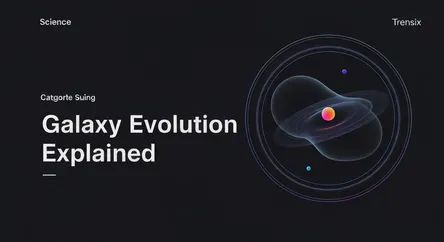Science
Galaxy Evolution Explained

Explore galaxy evolution, the study of how galaxies form and change over billions of years, from early starbursts to the massive structures we see today.
What is it?
Galaxy evolution is the field of astrophysics that studies how galaxies form and change over cosmic history. It's a grand story that begins with tiny fluctuations in the density of the early universe. These fluctuations grew under gravity, pulling in gas and dark matter to form the first small, irregular galaxies. Over billions of years, these protogalaxies merged, grew larger, and settled into the familiar shapes we see today, like spiral and elliptical galaxies. This complex process involves star formation, the influence of supermassive black holes at their centers, and dramatic collisions with other galaxies, all shaping their structure and destiny.
Why is it trending?
This field is experiencing a revolution thanks to advanced telescopes like the James Webb Space Telescope (JWST). JWST can peer back in time to the universe's infancy, revealing galaxies as they existed just a few hundred million years after the Big Bang. Recent discoveries have shown surprisingly massive and well-formed galaxies at this early stage, challenging existing models of how quickly they could have grown. These findings are generating intense scientific debate and pushing theorists to refine our understanding of the cosmos.
How does it affect people?
Understanding galaxy evolution helps answer fundamental questions about our own origins. By studying how galaxies like the Milky Way formed and developed, we gain context for the formation of our sun and solar system. This knowledge speaks to our innate curiosity about our place in the universe. Furthermore, the technological challenges of studying distant galaxies drive innovation in optics, computing, and data analysis, leading to advancements that can have broader applications on Earth. It fuels a sense of wonder and connection to the vast cosmos we inhabit.